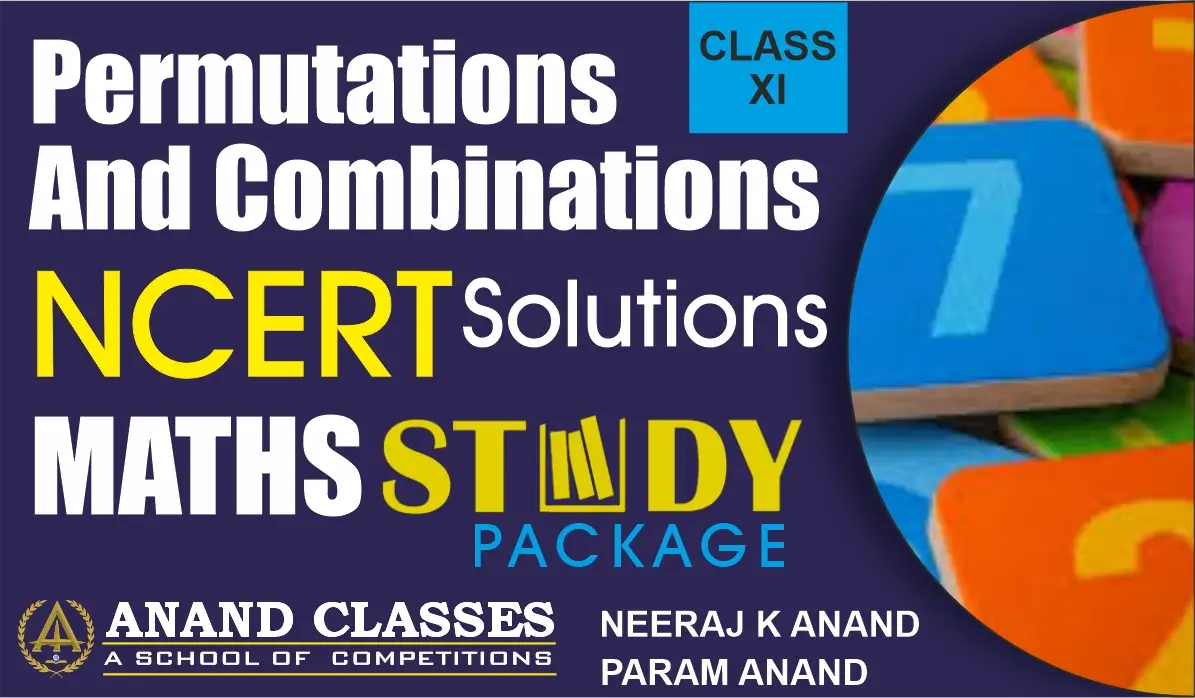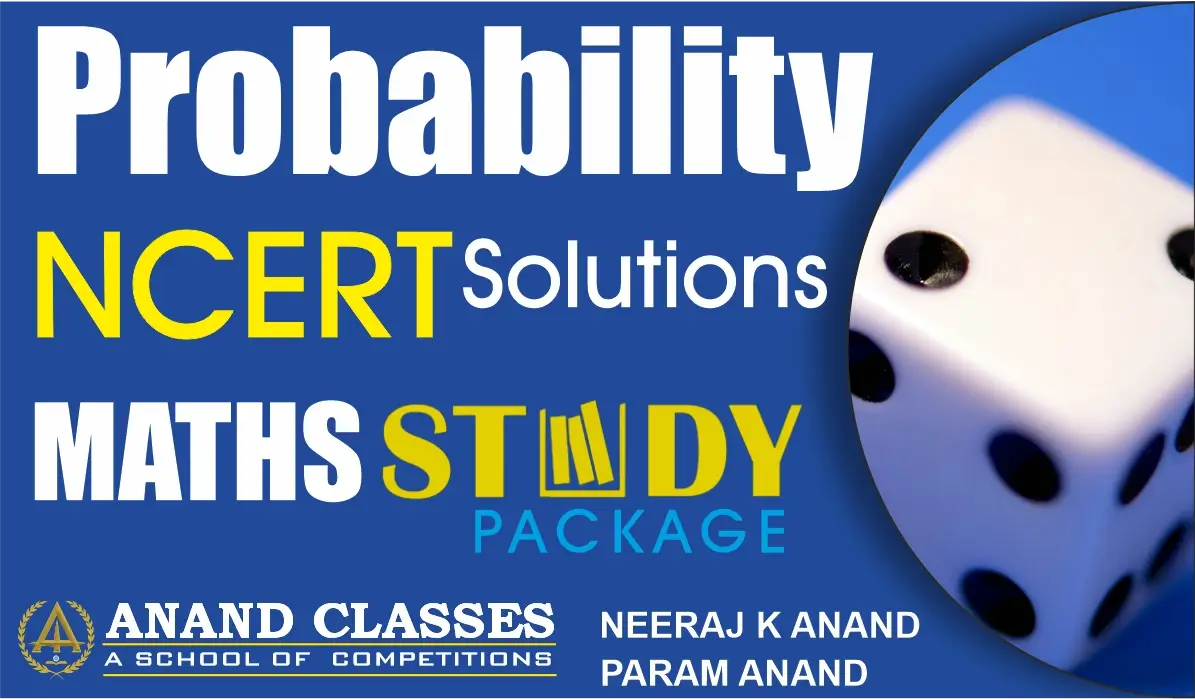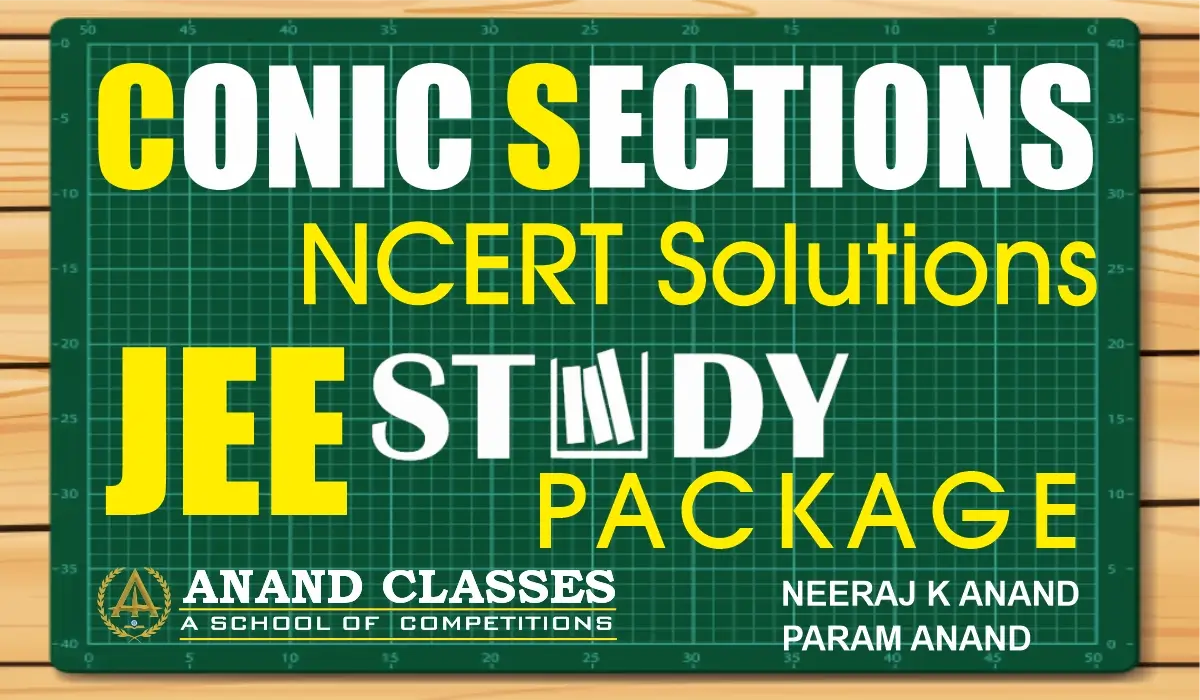Anand Classes provides complete NCERT Solutions for Class 11 Maths Chapter 6 Permutations and Combinations Exercise 6.1, designed to help students understand the fundamental counting principles and arrangement methods in mathematics. These step-by-step solutions are prepared as per the latest CBSE and NCERT syllabus, offering clear explanations and solved examples for each question. Students can use these solutions to strengthen their problem-solving skills and prepare effectively for board exams. Click the print button to download study material and notes.
NCERT Question.1 : How many 3-digit numbers can be formed from the digits 1, 2, 3, 4, and 5 assuming that
(i) Repetition of the digits is allowed
(ii) Repetition of the digits is not allowed
Solution:
(i) Repetition of the digits is allowed
Total number of digits = 5
Let the 3-digit number be $XYZ$.
Each of the three places can be filled in 5 ways (since repetition is allowed).
$$
\text{Total numbers} = 5 \times 5 \times 5 = 125
$$
Hence, $\boxed{125}$
(ii) Repetition of the digits is not allowed
Let the 3-digit number be $XYZ$.
- Number of choices for $X = 5$
- For $Y$, 4 digits remain
- For $Z$, 3 digits remain
$$
\text{Total numbers} = 5 \times 4 \times 3 = 60
$$
Hence, $\boxed{60}$
NCERT Question.2 : How many 3-digit even numbers can be formed from the digits 1, 2, 3, 4, 5, 6 if digits can be repeated?
Solution:
Let the 3-digit number be $XYZ$.
Since the number is even, $Z$ (the unit digit) can be $2, 4,$ or $6$.
So, choices for $Z = 3$
Repetition is allowed, so each of $X$ and $Y$ can be filled in 6 ways.
$$
\text{Total numbers} = 6 \times 6 \times 3 = 108
$$
Hence, $\boxed{108}$
NCERT Question.3 : How many 4-letter codes can be formed using the first 10 letters of the English alphabet if no letter is repeated?
Solution:
Let the 4-letter code be $ABCD$.
Choices for each position:
- $A = 10$, $B = 9$, $C = 8$, $D = 7$
$$
\text{Total codes} = 10 \times 9 \times 8 \times 7 = 5040
$$
Hence, $\boxed{5040}$
NCERT Question.4 : How many 5-digit telephone numbers can be formed using the digits 0–9 if each number starts with 67 and no digit is repeated?
Solution:
Let the 5-digit number be $ABCDE$.
Since the number starts with 67,
$A = 6$ and $B = 7$ (fixed).
Remaining digits available for $C, D, E = 8$ (as 2 digits already used).
Choices:
- $C = 8$, $D = 7$, $E = 6$
$$
\text{Total numbers} = 1 \times 1 \times 8 \times 7 \times 6 = 336
$$
Hence, $\boxed{336}$
NCERT Question.5 : A coin is tossed 3 times and the outcomes are recorded. How many possible outcomes are there?
Solution:
For each toss, there are 2 possible outcomes — Head (H) or Tail (T).
Since the coin is tossed 3 times:
$$
\text{Total outcomes} = 2 \times 2 \times 2 = 8
$$
Hence, $\boxed{8}$
Download detailed NCERT solutions by Anand Classes for Class 11 Maths, JEE, NDA, and CUET preparation.
Learn more about permutations, combinations, and counting principles in probability and discrete mathematics.
NCERT Question.5 : Given 5 flags of different colours, how many different signals can be generated if each signal requires the use of 2 flags, one below the other?
Solution:
Total number of flags = 5
Each signal consists of 2 flags arranged one below the other, so the order matters.
Since the same flag cannot be repeated, repetition is not allowed.
- Number of choices for the upper flag = 5
- Number of choices for the lower flag = 4
$$
\text{Total signals} = 5 \times 4 = 20
$$
Hence, the total number of different signals that can be generated is
$$\boxed{20}$$
For more learning on permutations and arrangements, explore detailed lessons and NCERT solutions by Anand Classes for Class 11 Maths, JEE, NDA, and CUET preparation.


